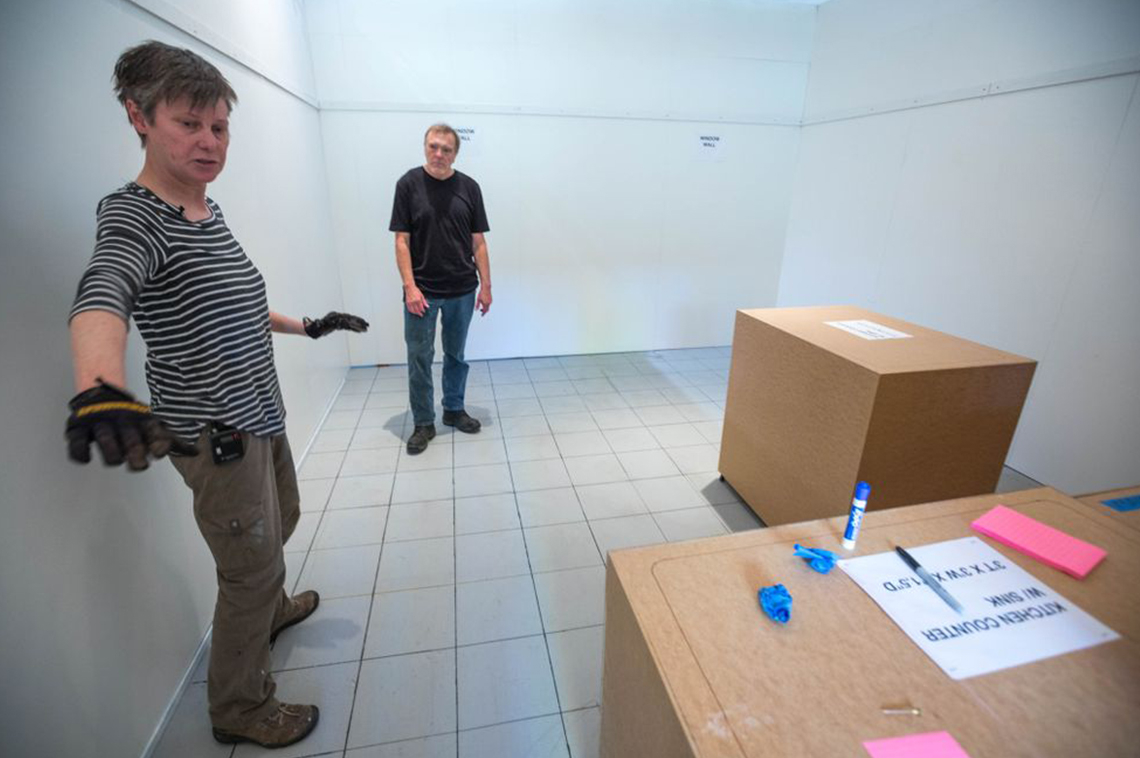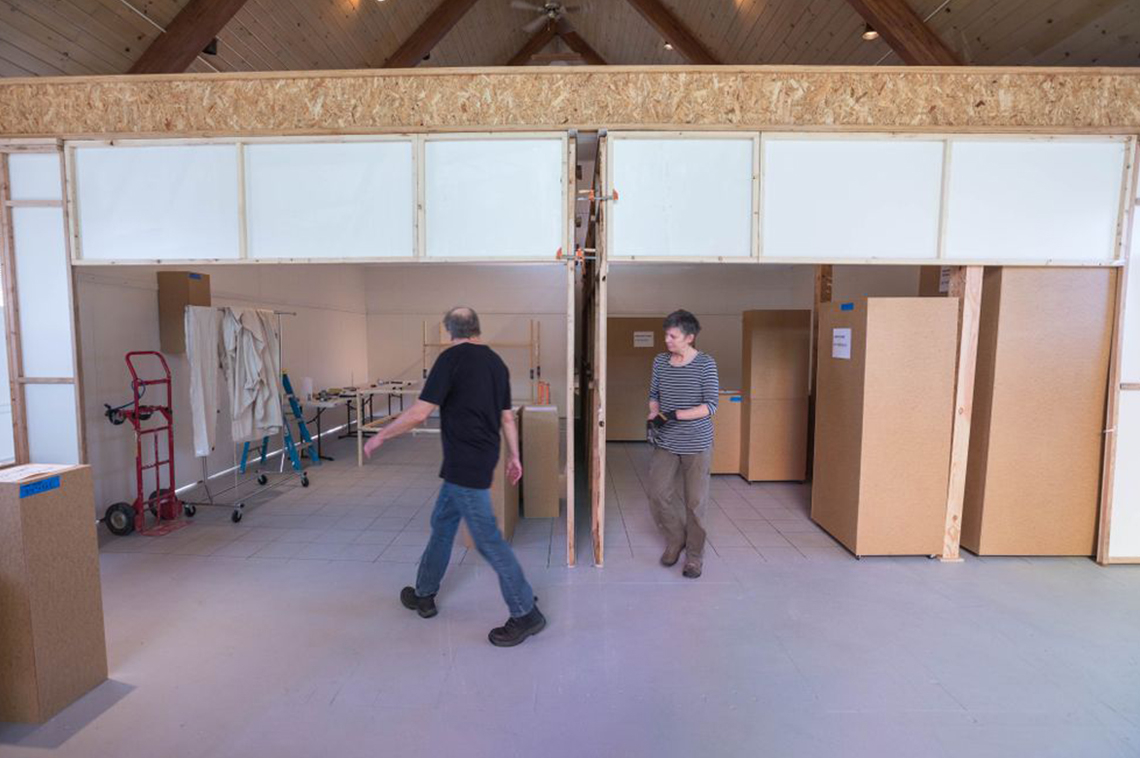

Anchorage artist Sheila Wyne and writer Bruce Farnsworth pushed box after box into an area with four wood walls and a gauze roof. They used power tools to screw wooden posts into a gridded floor. A full-scale studio apartment began to emerge.
"This is like being in a dollhouse," Farnsworth said at one point. "A big, grown-up dollhouse."
Cook Inlet Housing Authority, the nonprofit Anchorage housing developer, wanted the wooden walls and boxes to be a laboratory for the more efficient apartments of Anchorage's future — and a way to crowdsource apartment designs from people who may actually live in them someday.
The installation was inside what's known as the Church of Love, a former church next to the housing authority's offices. Authority officials say the "3D Living Big Living Small" project aims to merge art with discussions about how Anchorage will change and grow in the future.
The authority promotes affordable and mixed-use housing projects across income and age levels and has bought several properties. Officials had been brainstorming designs for small apartments for the former post office next door to the Church of Love. But no one was quite satisfied with the results of computer modeling or paper mock-ups, Wyne said.
Tyler Robinson, the housing authority's director of development, planning and finance, also decided he'd had enough of community meetings and panels. He was seeing the same faces over and over again.
"You stand around and a quote-unquote 'expert' — which sometimes is me — tells people something, takes a few questions and that's it," said Robinson. "We draw our conclusions as though that's representative of Anchorage."
"We're all experts at living," said Candace Blas, who coordinates Church of Love events and installations. "We all have pretty good insight into what it means to live inside a box."
To build a scale apartment inside the Church of Love, which is now owned by Cook Inlet Housing Authority hosted a variety of arts and culture events, Robinson and his colleagues turned to Wyne, who has experience in theater set design. She came up with a design for a studio apartment and a one-bedroom apartment. At less than 300 square feet, the studio is smaller than a two-car garage. She dug up the dimensions of typical pieces of apartment furniture — a shower, a refrigerator, a kitchen sink — and worked with housing authority carpenters to build dozens of wood blocks of the right sizes.
The walls were covered in a material that resembles a dry erase board, so participants could draw on the walls or take notes. Huge rolls of paper were wrapped around the front to make the apartment feel closed in. The idea was to bring in as many groups as possible to arrange the blocks and create their versions of livable apartments. Wyne worked with the in-house CIHA construction crew to build the pieces and parts for the set. We collaborated with other consultants to create a list of stakeholders to invite to play in the set to create the best layout possible. A total of 16 stakeholder groups ranging from professionals, to homeless teens, to CIHA frontline and operations staff members, to a group of local creatives participated in two hour build sessions.
"Constructing a fort, making a house in the woods, just all those things we did as kids … now you're just channeling that for a more adult purpose," Wyne said. "So it turned out to be a really joyful thing to work on. The project has given us the confidence to include relatively small studio apartment designs in developments currently moving forward as a way to increase housing options and affordability in Anchorage. It also demonstrated the impact of engaging community members in a creative way. The small working groups were a great opportunity for people to work together on a challenge, which began with them discussing who they envisioned living in the space – real people, friends, neighbors, and family."
Living Big, Living Small
"While we thought we were creating a space for layout design discussion, we realized after the first group participated that this exercise was uncovering much more. " Said Tyler Robinson. "Our post-exercise debriefs with each group allowed for broad and open discussion about community, including who might live in a small apartment, where would they make the most sense in our community, and what other amenities might need to be present in a neighborhood to support smaller living. The participants envisioned this housing for themselves, their parents, their children, their neighbors – a real person with housing needs and not simply a person who lived in “subsidized housing”. For many participants, the exercise truly showed that you could fit a lot of amenities comfortably into a small footprint. For others, it was an opportunity to think about and discuss broader community needs. And fundamentally for CIHA staff, Board, and designers – our eyes were opened to new housing approaches and unit sizes that could reach a deeper level of affordability.
Cook Inlet Housing Authority is one of six Community Development Investments from the program launched by artPlace in 2015 to investigate and support place-based community development organizations to sustainability incorporate arts and culture into their core work. This one-time program provided $3 million to each of six community planning and development organizations over three years, along with significant technical assistance on conceiving, executing, and financing creative placemaking projects aimed at achieving their missions more effectively and for more of their communities.





